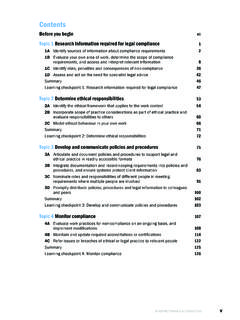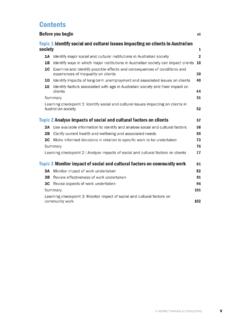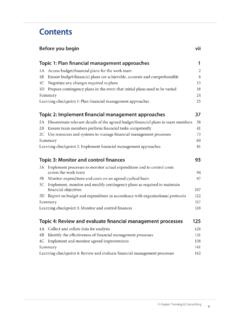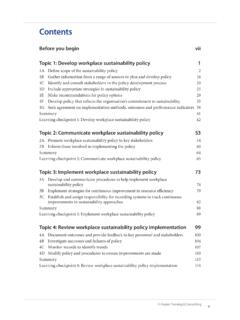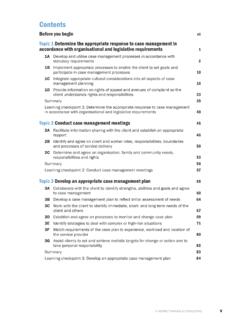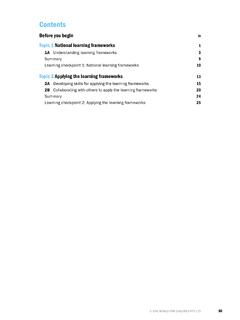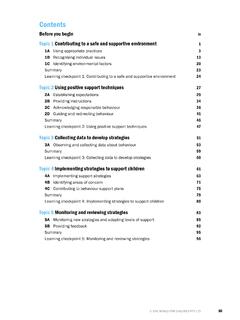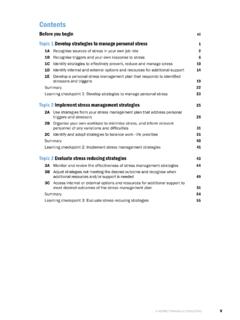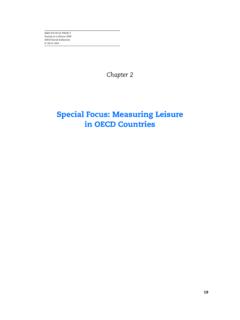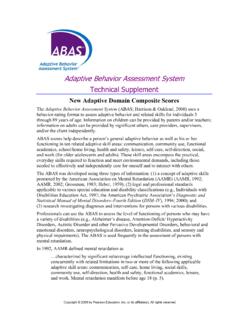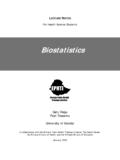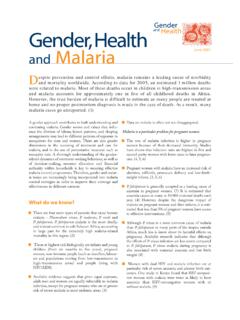Transcription of CHCLAH004 Participate in planning leisure and health ...
1 Contents Before you begin vii Topic 1 Participate in profiling people's specific needs 1. 1A Determine people's specific issues, characteristics and symptoms 2. 1B Identify the impact of issues, characteristics and symptoms on participation 12. 1C Determine strategies and modifications that will maximise participation in programs 19. Summary 29. Learning checkpoint 1: Participate in profiling people's specific needs 30. Topic 2 Promote inclusion and empowerment 33. 2A Follow principles of integration in recreational and leisure activities 34. 2B Identify advantages of integration in activities 40. 2C Identify disadvantages of segregation in activities 44. 2D Identify ways to empower people with complex needs through activities 49. Summary 63. Learning checkpoint 2: Promote inclusion and empowerment 64.
2 Topic 3 Contribute to the plan for addressing the impact of people's issues, characteristics and symptoms 67. 3A Determine recreational and leisure needs of people with complex needs 68. 3B Identify benefits of participating in activities to meet identified needs 80. 3C Identify barriers to participating in recreational and leisure activities 82. 3D Develop strategies for overcoming identified barriers 86. 3E Involve stakeholders and relevant others to manage barriers according to a person's needs 96. Summary 102. Learning checkpoint 3: Contribute to the plan for addressing the impact of people's issues, characteristics and symptoms 103. Topic 4 Participate in the development of effective strategies for working with people with complex needs 105. 4A Examine issues and their impact on participation in leisure and recreational activities 107.
3 4B Demonstrate the use of appropriate language 111. 4C Design strategies relevant to cultural and social community contexts 117. 4D Adapt activities, programs, environment and equipment to optimise involvement in programs 141. 4E Document strategies within an individual program plan and activity plan 149. Summary 155. Learning checkpoint 4: Participate in the development of effective strategies for working with people with complex needs 156. v CHCLAH004 . Participate IN planning leisure AND health PROGRAMS FOR CLIENTS WITH COMPLEX NEEDS. Sensory disability Explanation Sensory disability is related to hearing or visual impairments. An individual may have some hearing or vision and still be classified as having a sensory impairment. Some people have both hearing and vision impairment and may be referred to as having deafblindness.
4 Causes of deafness XX Central Auditory processing disorder a breakdown in the hearing and listening processes XX Conductive hearing loss problems in the middle or outer ear XX Mixed Hearing loss a combination of conductive and sensorineural hearing loss XX Sensorineural Hearing loss problems in the inner ear leading to inability to hear Causes of blindness XX Maternal infections experienced during pregnancy XX Consequences of disease (for example, diabetes, glaucoma, trachoma). XX Complications associated with extreme prematurity XX Birth complications and genetic conditions XX Trauma, poisoning and tumours XX Ageing and age-related conditions such as macular degeneration, cataracts and optic nerve atrophy Symptoms XX Decline in sharpness or clarity of vision (visual acuity). XX Decline in the normal range of what you can see (visual fields).
5 Example An older person who has deafblindness lives in a specialist group home and attends recreational activities designed specifically with his sensory and age-related needs in mind. A young child who is blind requires recreational activities. Disadvantaged groups Explanation People who experience disadvantage through being homeless, socially isolated, unemployed or housebound are often limited in their ability to interact and Participate in the activities of mainstream society. Example A middle-aged man who is homeless visits a breakfast club at his local church to eat nutritious food and interact with others in his community. An eight-year-old boy who wants to Participate in sporting activities comes from a homeless family. A refugee would like to Participate in social activities. 8 ASPIRE TRAINING & CONSULTING.
6 CHCLAH004 . Participate IN planning leisure AND health PROGRAMS FOR CLIENTS WITH COMPLEX NEEDS. 1B Identify the impact of issues, characteristics and symptoms on participation As a care worker in the leisure and health sector, it is important that you have an awareness of the complexity of individual needs. Once you have an understanding of the specific issues, characteristics and symptoms related to a person's care needs, you will be able to determine their impact on a person's participation in services and activities. Issues that people with disability may face Some disabilities are known to occur more frequently with other conditions. This is known as a comorbid or coexisting condition. For example, a person may have attention deficit hyperactivity disorder (ADHD), which is known to often exist alongside a learning disability such as dyslexia or dyspraxia.
7 As the diagnosis of one condition sometimes increases the likelihood of another condition existing alongside it, it is important to consider the implications of each condition and remain aware of the possibility of future diagnoses. It can be challenging for individuals with complex needs to Participate in activities of daily living. Some of the issues that may affect a person with complex needs include: XX accessible and affordable transport XX accessible and affordable medical and personal care support XX physical and practical access to venues, buildings and public spaces XX engagement in appropriate education or work XX social interactions and acceptance by the wider community XX the ability to function safely and independently in the community XX communication skills and access to communication technology where needed XX social isolation or difficulty in developing friendships and relationships.
8 Social isolation and difficulties forming relationships Some people with complex needs can become socially isolated, both in terms of the number of interactions they have with other people and in how they feel about their social interactions; for example, they may feel dissatisfied and lonely as a result of limited social interactions. Some groups of people can be particularly at risk of social isolation; for example, older people without partners or children. Social isolation greatly affects older people. For some of these people, living alone is combined with deteriorating emotional and physical health and decreasing levels of independence and mobility. These factors can all contribute to a decreasing ability to Participate in recreation and leisure activities, which can then lead to further social isolation and loneliness.
9 12 ASPIRE TRAINING & CONSULTING. Topic 1. Participate in profiling people's specific needs Care or program plans may include information about the person's: XX living situation XX medical information XX communication needs XX points of contact for emergencies XX personal care needs XX manual-handling or transfer XX specific task requirements, such procedures as dressing support, shopping or XX use of equipment such as hoists attending to household chores XX supervision and support information. Concerns or issues for follow-up or referral As a leisure and health worker, you should record activities that have been completed with the person and any concerns or issues requiring follow-up or referral. Sometimes people with complex needs may use supports from several different services. For example, they may receive services at home, access a respite program, and attend an out-of-school-hours care program and a weekend family care placement.
10 Using multiple services can mean that similar information is recorded in several places or in several different plans. It is useful if workers from different services collaborate to ensure the person and their family or caregivers do not need to repeat information and discuss issues multiple times with different people. If workers are able to liaise with each other and ensure a consistent and appropriate approach is used to record the person's care plans and other details, then the person is likely to feel more positive about the management of the care they receive. This is one useful strategy for helping a person with complex needs to Participate more easily in leisure activities. Determine people's specific issues, characteristics and symptoms Example Janet is a full-time carer for her son, who has multiple disabilities.
